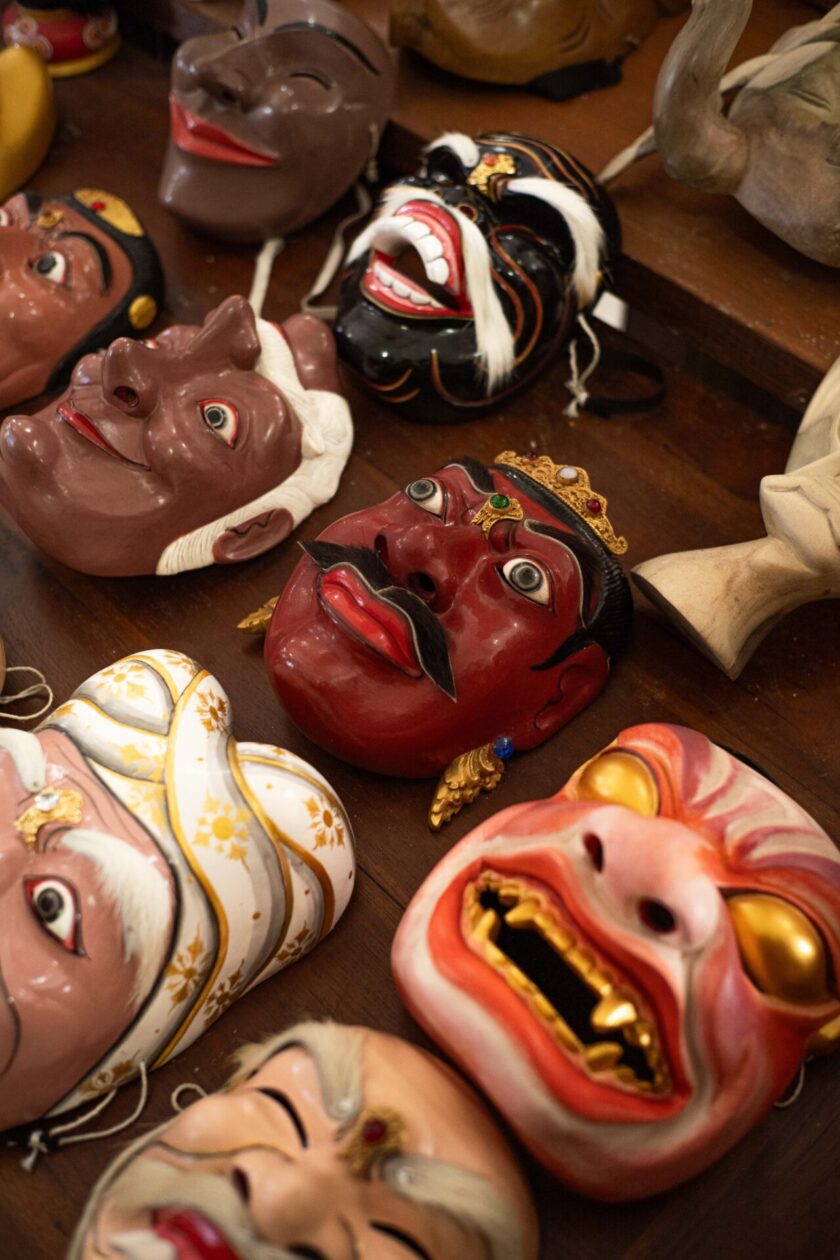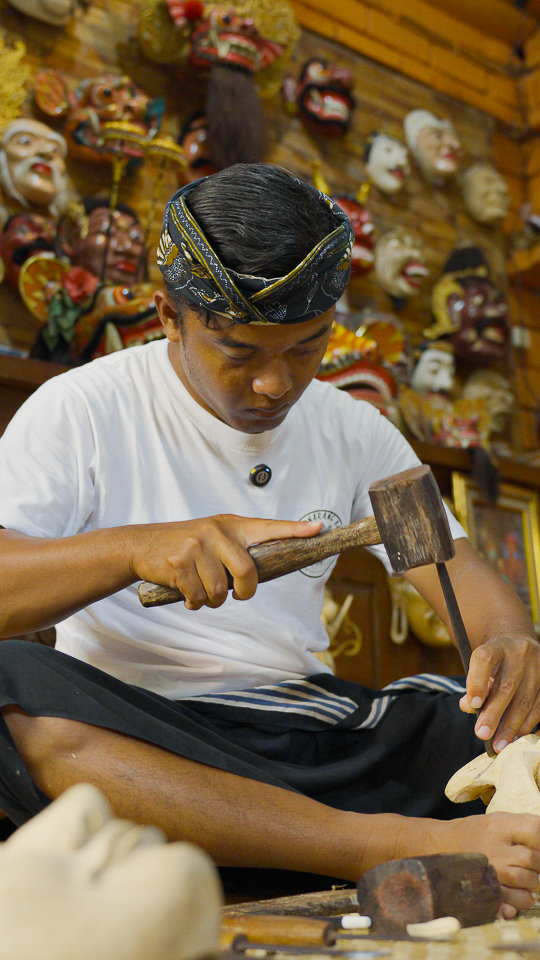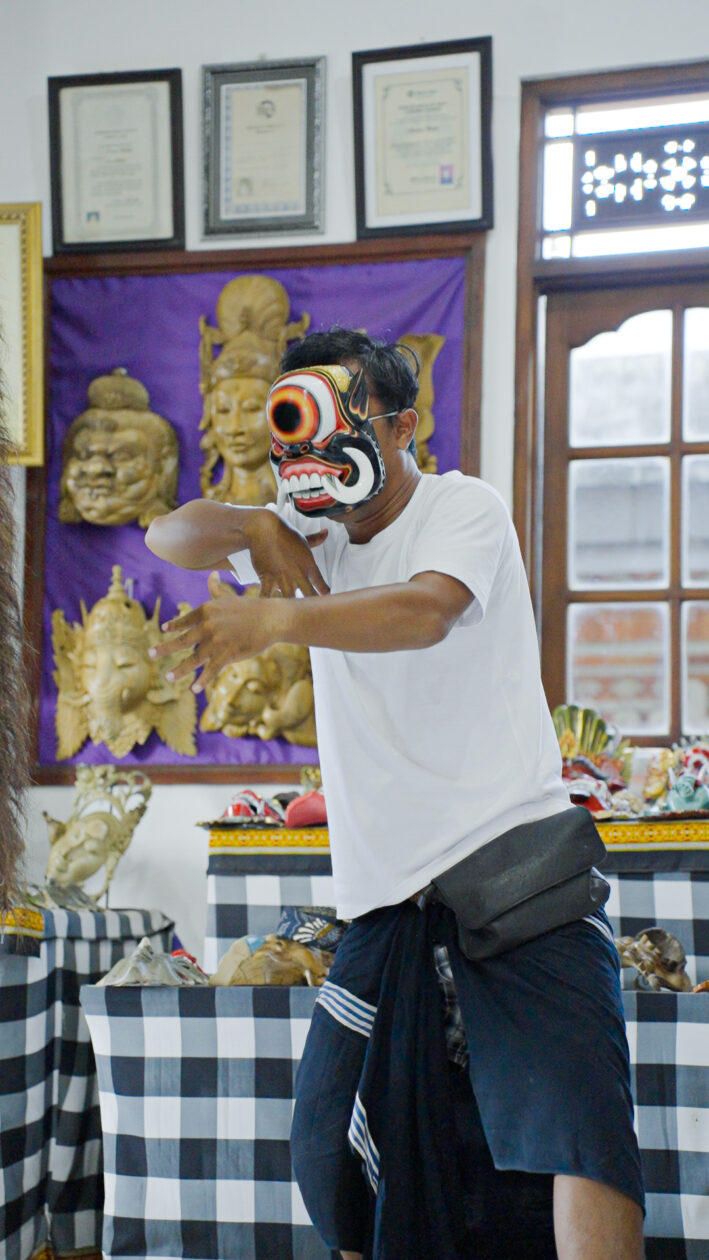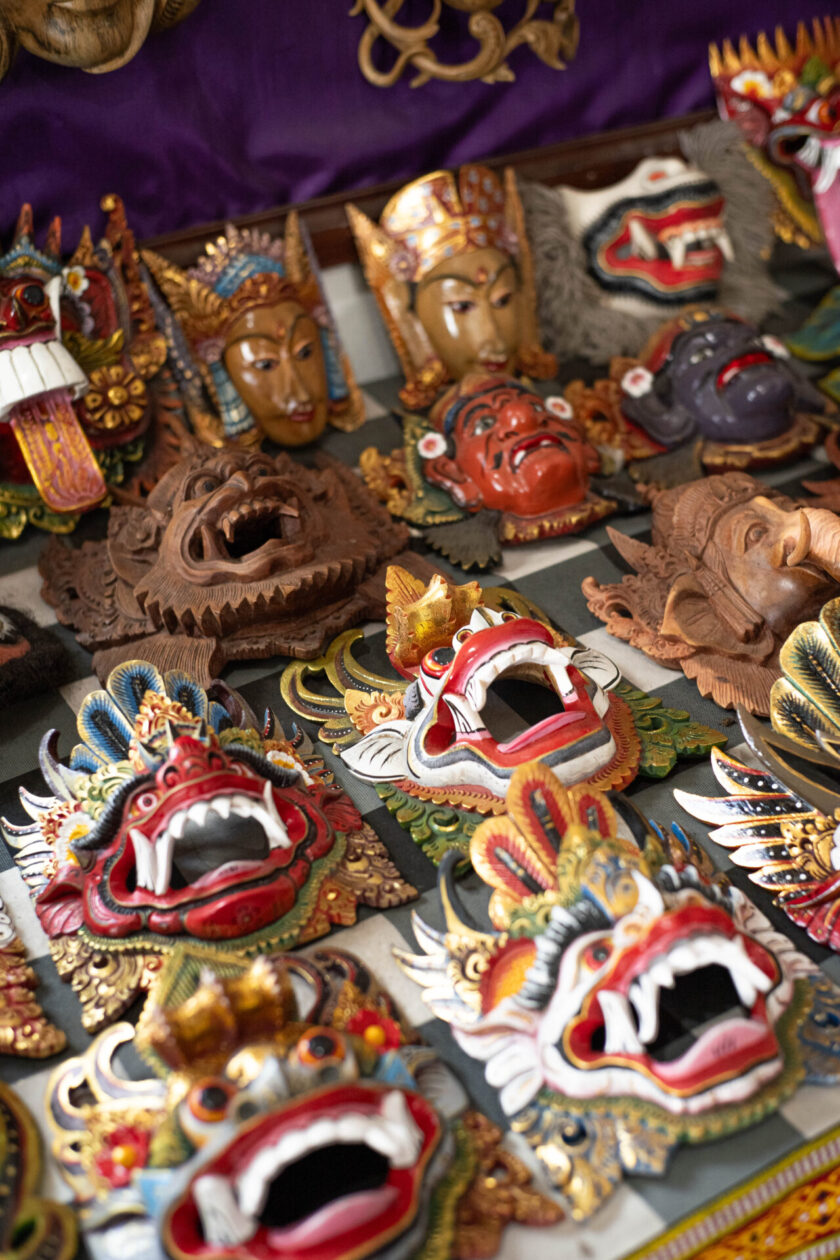Bali is known for its deep reverence for cultural heritage, and nowhere is this more evident than in Mas Village. Located just a few kilometers south of Ubud, this small community has been the island's epicenter of traditional wood carving for centuries, particularly renowned for its exquisite mask-making tradition.

The Art of Sacred Masks
In Mas Village, masks are far more than decorative objects: they are vessels of spiritual power and storytellers of ancient mythology. Each mask carved here represents characters from classical Balinese dance-dramas like the Topeng and Barong performances, embodying deities, demons, heroes, and clowns from Hindu epics.
The artisans, many belonging to families who have passed down their craft through generations, work primarily with Pule wood (Alstonia scholaris), a sacred timber believed to possess spiritual qualities. The wood is soft yet durable, allowing for intricate detailing while maintaining the mask's strength through countless performances.
A Living Tradition Fading in Time
We met up with Komang Mega, a third-generation mask maker in Mas Village dedicated to preserving the art of handmade masks. His workshop sits tucked behind a main road storefront, where masks in various stages of completion line shelves like patient ancestors waiting to be brought fully to life. His hands move with practiced confidence across the wood, but his words carry concern about the future.
“My father told me before he passed,” Komang explains, pausing mid-stroke with his chisel. “That if pursued a path in notary, my skills might fade. If we let go of this mask-making legacy, we’ll only be remembered by name alone.”

The issue isn't lack of appreciation. Tourists and collectors still seek authentic Balinese masks. It's the economics of patience. Traditional mask carving demands years of apprenticeship before anyone can produce work worthy of ceremonial use. Each mask is typically hand-carved from a single piece of wood and can take weeks or even months to complete.
During the pandemic, these living legacies were impacted greatly. Many artists move to the tourism industry, or they continue their legacy by compromising with modern production methods: printing masks with molds and fiber.
These mass-produced versions undercuts traditional artisans whose work commands higher prices precisely because it carries authentic spiritual and artistic value.
Beyond the Mask
Every mask carries meaning, each one embodying sacred symbols intertwined with daily Balinese life. For instance, the Wali mask is essential in every religious procession. For entertainment, the Bebalihan mask reflects human expression—something Komang graciously demonstrated in a short yet captivating performance: a laughing mask for comedy, a slender one for shyness, and a one-eyed mask for a fierce, dramatic dance.

Despite challenges, Komang and artisans like him refuse to abandon their artistic legacy. He's adapted where necessary, opening his workshop like his father and his father before him, offering introductory lessons to tourists wanting to try basic carving to showcase his legacy both offline and online. But the core practice remains unchanged: Pule wood, hand tools, spiritual protocols, and patience measured in weeks rather than hours.
“It’s good to love the art itself, but we often overlook the intricate process behind it. By finding joy in the craft, we become more mindful of creation—‘Ah, so this is how it’s done.’ Yet it’s ultimately better to be part of its preservation.”
The chisel strikes wood again, the rhythm unchanged from his grandfather's time, from his great-grandfather's time, echoing backward through generations of carvers who understood that some traditions matter too much to let fade into mere memory. In Mas Village, every mask still speaks—of gods and demons, of wisdom and foolishness, of the eternal stories that make us human. And as long as carvers like Komang continue their work, those voices won't fall silent.
Visiting Mas Village
Mas Village lies about 6 kilometers south of Ubud and is easily accessible by scooter, car, or arranged transport. Many workshops welcome visitors to observe artisans at work. No purchase is required, though it’s always appreciated.
If you’d like to experience this rich heritage yourself and be a part of the preservation, get in touch with us for a guided tour into the heart of Balinese craftsmanship still deeply carved into the village’s identity.

Categories: Gianyar, Art & Culture, Destination, Things to Do
